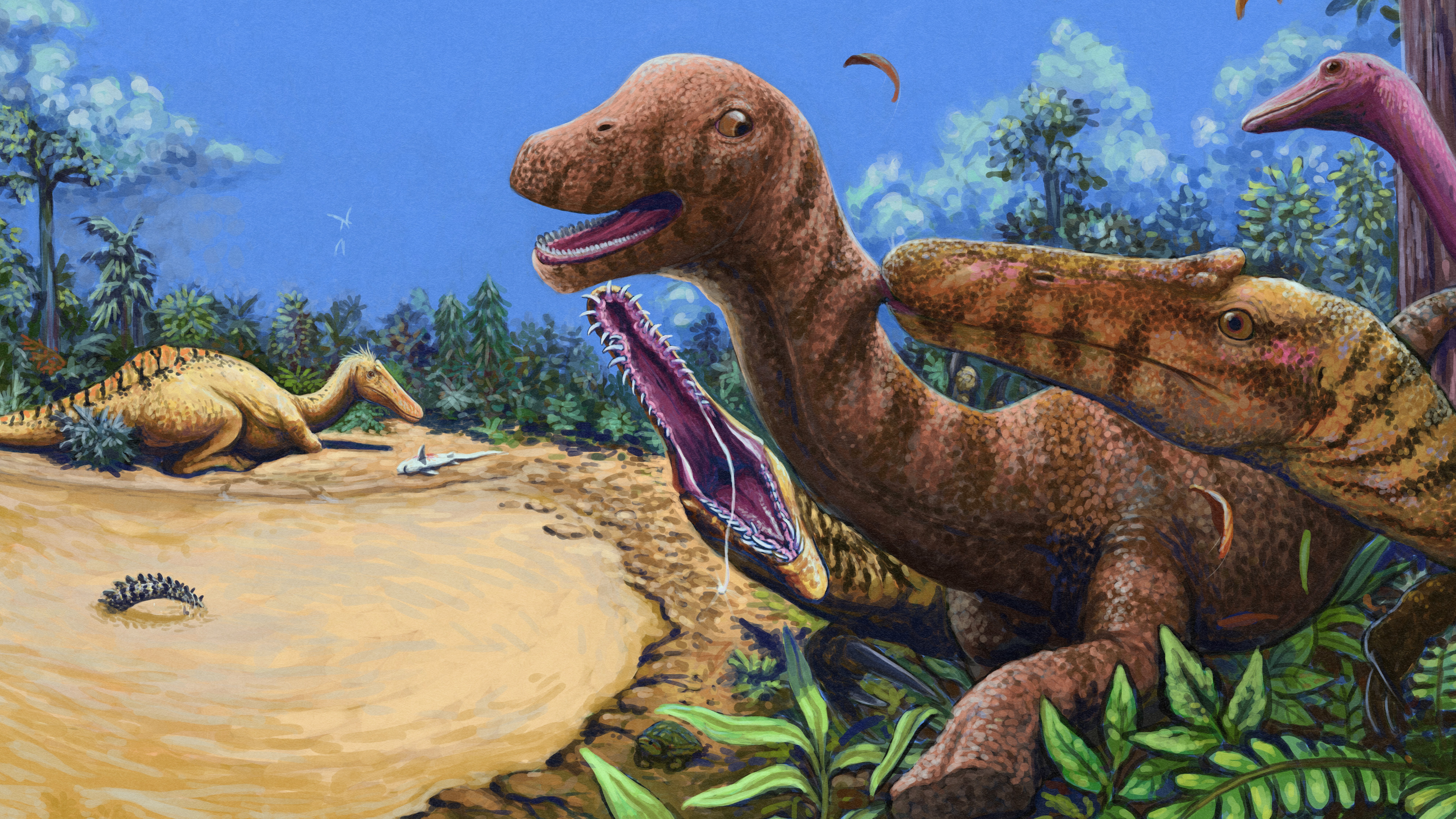
The smoked mummy of a village chief in Papua New Guinea has gotten a makeover, helping members of his clan connect with his spirit in the "ghost world."
The mummy, also a former shaman and warrior named Moimango, was lashed by the elements over the past several decades, causing his body to deteriorate. But scientists were able to restore Moimango's body using materials from the jungle.
The researchers also learned exactly how the smoked mummies were made, said study co-author Ronald Beckett, a professor emeritus and bioanthropologist at Quinnipiac University in Connecticut. [See Images of the Smoked Mummies of Papua New Guinea]
Ancestors above
High above the village of Koke, on a cliff sheltered by a small overhang, sit the mummified bodies of several deceased members of the Anga clan. The village, in the Aseki region of Papua New Guinea, lies in a remote area between the highlands, which have seen an influx of foreigners due to gold mining, and the coast, which has contact with the outside world through its ports.
Beckett first learned about the mummies from photojournalist Ulla Lohmann, who had visited Koke several times. The clan leader, a man named Gemtasu, wanted to improve the condition of the remains of his father Moimango, who was mummified in the 1950s. Gemtasu hoped that by restoring his father's body, he could also revive the cultural practice of smoking mummies, which missionaries had discouraged for decades.
Mummies mark the Anga's territory. Relatives such as Gemtasu often consulted with departed loved ones for advice and included them in celebrations. The ability to see the face of the departed loved one was critical to this process, Beckett said.
Get the world’s most fascinating discoveries delivered straight to your inbox.
According to the Anga, great people whose bodies are not taken care of will roam the jungle as spirits and potentially sabotage hunting or crops, Beckett told Live Science.
"The ghost world — that's a very, very real thing to them," Beckett said.
Mummy restoration
The years had not been kind to Moimango. He had a dislodged jaw and a drooping head in danger of completely falling off. Lichens had also infiltrated the body, and at one point, a rodent had burrowed into Moimango's side, making a nest inside, Beckett said.
Beckett and his colleague Andrew Nelson of the University of Western Ontario in Canada wanted the Anga to be able to maintain the restorations themselves. So, in 2008, the team arrived and asked villagers to identify suitable restoration materials from the jungle.
"I went to Papua New Guinea with practically nothing other than some examination tools," Beckett told Live Science.
The team used bark cloth called tapa to patch and support body parts, such as the jaw and the head, and heated sap from the kumaka tree to use as glue. The team killed the lichens permeating Moimango with a lime-based substance called suca made from crushed shells, which has the same pH as bleach. They also touched up the ocher clay on the body, and restored some of the other mummies on the cliff.
The local materials worked remarkably well.
When he saw the final results, "Gemtasu was very pleased — he started to cry, he started to sing, he started to dance, he took my hand," Beckett said.
Two years later, when the team returned, Moimango was still in good condition and the lichen had not grown back.
Smoking the body
The team also mummified a forest pig to understand how the smoking process worked.
Here's how the villagers mummified loved ones: First, they scraped the bodies with a bristly plant, before placing it in a hut filled with smoke for 30 days. A bamboo pipe served as an anal spigot to evacuate the gut contents, and bodily fluids leached out of tiny holes poked in the hands and feet that were massaged by villagers. [Image Gallery: Mummy Evisceration Techniques]
Finally, villagers slathered the bodies with ocher, a claylike form of iron oxide, which further wicked moisture from the body and created a capsule to protect the mummifying remains from the elements.
Even in the sweltering conditions of Papua New Guinea, which normally accelerate the decomposition of corpses, the process worked remarkably well, Beckett said. The smoke makes a hostile environment for bacteria and prevents insects from laying eggs in the body. Arsenic in the smoke also acts as a preservative, Beckett said.
Though the process may seem strange to those unfamiliar with it, the spiritual belief underlying it — that the physical remains of the dead person are a way to communicate with them — isn't all that different from Western mourners leaving flowers on the grave of a loved one or going to a cemetery to talk to their deceased relatives, Beckett said.
The restoration of Moimango was described in a study published today (May 22) in the journal Anatomical Record.
Follow Tia Ghose on Twitter and Google+. Follow Live Science @livescience, Facebook & Google+. Originally published on Live Science.

Tia is the editor-in-chief (premium) and was formerly managing editor and senior writer for Live Science. Her work has appeared in Scientific American, Wired.com, Science News and other outlets. She holds a master's degree in bioengineering from the University of Washington, a graduate certificate in science writing from UC Santa Cruz and a bachelor's degree in mechanical engineering from the University of Texas at Austin. Tia was part of a team at the Milwaukee Journal Sentinel that published the Empty Cradles series on preterm births, which won multiple awards, including the 2012 Casey Medal for Meritorious Journalism.


